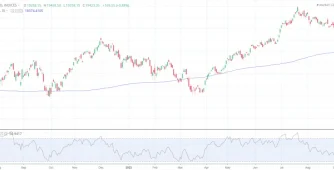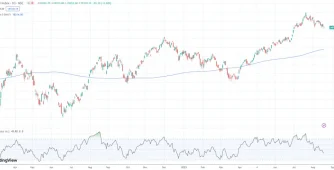Absolutely not. . . .
We would take this opportunity to throw some light on what is called
“The Expense Ratio”

In your case,

Now what this means is that you are effectively paying 20% of your total
investment value as subscription fee and this is exactly the minimum
percentage your portfolio will need to deliver as returns just to meet your
subscription expenses. FORGET ABOUT YOUR PORTFOLIO BEATING
INFLATION or ANY OTHER ASSET CLASS for that matter.
Let us assume your portfolio generated 15% during your first year of
subscription, this means

Hold on, Rs 11,250 is not what you made during that tenure. You will need
to subtract your expenses (subscription fee) to arrive at the net returns
generated.
Which is , 11,250 – 15,000 = (-3,750)

Note : Subscription Fee becomes the biggest component in Smallcase
Investments. Taxes, Brokerage charges, etc are minimal compared to the
subscription fee and are hence not included in calculating net returns.
So what is a good expense ratio for your Smallcase ?
Generally , when you invest into a mutual fund, you shall be entitled to
pay a subscription fee approximately between 1% to 2% of your
investment value. The percentage can be dependent on factors like
whether it is a debt / equity fund , the size of the fund (AUM), etc. We will
not get into that in this article.
We firmly recommend that you must keep your expense ratio lower than
2.5% (lesser the better)
If you have paid a fee of Rs 15,000, then according to this rule, your
investment value in that Smallcase should not be less than Rs 6 Lac

Note : If you want to keep your fee as low as possible, you may consider a
different fee percentage and play around with the denominator
accordingly to arrive at the optimum capital as per your requirement.
A 1% expense ratio would mean that your investment value should be
Rs 15 Lac
We have mentioned a minimum and maximum investment range for
each of WeekendInvesting Smallcases which you can find on the HUB

If you want to invest into Mi 20 for example, the minimum recommended
capital is 1 lac. When you invest 1 Lac, your annual expenses (Subscription
fee) shall be Rs 4,999 resulting in an expense ratio of 5%. When you
further add more capital either in the form of SIPs or lump sums, the
expense ratio will continue to reduce.

In the above table, you can observe how the expense ratio reduces over
time as your investment size increases. Now, expense ratio is calculated
on the current value of the investment which includes the returns
component as well.
In the same example given above, let us assume the portfolio clocks a
standard 15% return in each of the five years.

With a standard return of 15% per annum, the expense ratio reduces as
net returns increases when you continue to increase the size of your
portfolio through SIPs or lump sums.
Note : This does not mean that folks who have lesser capital than the
investment value corresponding to a less than 2.5% expense ratio should
not invest.
We have time and again communicated vociferously that you shouldn’t
jump in all at once but gradually add capital to the Smallcase by
spreading your investment across a couple of years if possible.
This means that your expenses could be higher in the beginning and will
gradually reduce over time. We would request you to remain invested for
5+ years to get the best experience out of WeekendInvesting Smallcases.
Stay invested for a long tenure – Keep adding capital gradually over a
period of time – Execute your rebalances – Try to avoid any manual
intervention unless confident.
If you have any further doubts or questions, please send an email to support@weekendinvesting.com






